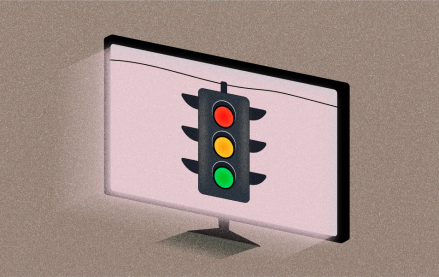Netflix readies pan-European rollout of its in-house ad tech amid pricing competition

As a Digiday+ member, you were able to access this article early through the Digiday+ Story Preview email. See other exclusives or manage your account.This article was provided as an exclusive preview for Digiday+ members, who were able to access it early. Check out the other features included with Digiday+ to help you stay ahead
Last week, Netflix unveiled the European rollout of its programmatic beta program involving tie-ups with demand-side platforms Google and The Trade Desk, among others, that will go into effect later this month.
It’s the second leg of a global rollout first unveiled during its last upfront pitch and subsequently launched across the Americas that its leadership was keen to laud the success of on its earnings call earlier this year.
Netflix co-CEO Gregory K. Peters claims ads will be a “priority part of our roadmap for several years,” dubbing 2025 as a transitionary stage of its rollout whereby it will switch gears “from crawl to walk.”
But he’ll need more than price parity if it’s to grow its ad business as it pushes ahead, according to Digiday sources.
Buyers reached for this story said they are likely to push Netflix further for discounts amid downward pricing pressure induced by equally well-resourced household-name streamers such as Amazon Prime and YouTube.
For example, Amazon’s aggressive pricing pulled prices down across the streaming ad market throughout 2024. Elsewhere, U.K. broadcaster Channel 4 made its streaming ad inventory available to buy in private marketplaces (PMP) deals in November.
Hence, teams controlling the purse strings of brands’ media budgets are likely to seek similar savings when it comes to Netflix’s more closed trading environments, such as PMPs.
What’s on offer?
Effective Feb. 24, brands and agencies in Germany, Spain, France, Italy, and the U.K. will be able to buy ad time on Netflix — some 16% of British households (4.7 million viewers) use its ad-supported tier, according to Broadcasters’ Audience Research Board (BARB), a.k.a. the British equivalent of Nielsen.
According to sales materials seen by Digiday, media buyers target audiences based on the parameters below, with pre-roll and mid-roll ads lasting between 15 and 75 seconds.
- Location (postcode or ZIP code targeting available)
- Time of day
- Device-type
- Show genre
One media buyer who exchanged candor for anonymity further claimed that Netflix plans to reserve certain capabilities for its direct programmatic tier.
However, what’s currently not on offer is age-based audience targeting via the DSPs, while program-level targeting, i.e., booking spots within specific shows, such as Bridgerton or Squid Game, is reserved for direct buys. That’s a typical policy among streamers aimed at maintaining premiums associated with direct ad buys — too heavy an ad load or an influx of irrelevant ads might cause users to switch off.
Additionally, third-party ad verification is available via DoubleVerify and Integral Ad Science, with Google Campaign Manager 360 and Innovid also providing campaign-delivery services, according to Digiday sources.
Agency charm offensive
In the U.K., rollout efforts have been led by Netflix managing director Warren Dias and head of trading Patrick Morrell, with sources noting how they have also drafted a support team with extensive TV experience.
“Those two were really front and center in pretty much every meeting,” said Will Gough, head of product at Dentsu’s Amplifi media investment unit, who described the pair’s efforts as “a really good job.”
Dentsu has been testing Netflix’s new programmatic solution. Gough declined to name the clients or budgets involved but noted how Netflix’s programmatic-direct offering made it comparatively easy to sell to clients.
Dias and Morrell’s team sought to make it “as appealing as possible” to major agency buying teams, according to Gough, echoing other sources who made similar observations.
According to Nelleke van Grinsven, media director at Dept, who ran campaigns on the streaming service for clients such as Lotus Biscoff, Netflix makes efforts to ensure brands’ advertising on its platform “fit” well with its programming. “If [your bid is] selected, you do get that attention value and that consistency [among] audiences, but also the placements are curated,” she told Digiday.
Evolving ad tech strategy
Netflix execs first unveiled its first foray into an ad-funded offering at the Cannes Lions Festival of Creativity in July 2022 via its partnership with Microsoft Advertising and its Xandr platform. But execs have since significantly pivoted its strategy.
By March 2023, Digiday sources indicated that Netflix was reassessing its ad strategy, contemplating building or acquiring its own ad tech to reduce reliance on its initial partner agreement with the software giant for a short period.
Throughout this time, Netflix faced challenges, including high CPMs and limited reach, leading to advertiser dissatisfaction and the departure of key ad sales executives Peter Naylor and Jeremi Gorman, which further signaled potential internal shifts.
The second phase of its advertising roadmap, i.e., adding partners such as Google, Magnite (primarily through its ad server SpringServe) and The Trade Desk to its roster of ad tech partners, has yielded dividends. Such moves were geared toward assuaging agencies’ concerns around control and transparency while establishing a more competitive and robust ad tech infrastructure.
On its recent earnings call, Netflix claimed its 2024 ad revenue doubled compared to the previous year. Presumably, the U.S. launch of its expanded ad tech strategy (which began in Q3) likely contributed considerably to this figure, as co-CEO Peters further claimed, “We exceeded our ads revenue target in Q4,” but did not offer a revenue figure for the year or quarter.
Downward pricing pressure
Amid these efforts, the broader maturation of the ad tech ecosystem means Netflix’s pricing remains a challenge. According to sources, although its CPM rates in the U.S. dropped from $60 in 2022 to around $29 in 2024, these still trail Amazon’s CPM offerings in value and audience scale.
Speaking with Digiday in August 2024, advertisers acknowledged Netflix’s premium offering but claimed limited scale made it difficult to justify for those with tighter budgets, especially when compared to broader, more cost-efficient CTV platforms. Harry Packshaw, head of AV at Havas Media Network, further told Digiday, “Amazon’s very competitive compared to Disney and Netflix.”
More recent (Q4) insertion order pricing data shared with Digiday notes how CPMs vary across Europe — starting at £44.50 ($55.40) in the U.K., €37 ($38) in France, and €58 ($60) in Germany — with sources hoping the upcoming rollout will ameliorate costs, and encourage them to scale Netflix spend.
One agency media buyer who also exchanged candor for anonymity told Digiday that PMP pricing in each market would likely be 20% cheaper than direct IOs.
So, amid buyer enthusiasm, it appears the continued success of Netflix’s expanded ad tech strategy is likely to be equally reliant upon cost as it is technical proficiency if it is to sharpen its competitive edge.
More in Media

What publishers are wishing for this holiday season: End AI scraping and determine AI-powered audience value
Publishers want a fair, structured, regulated AI environment and they also want to define what the next decade of audience metrics looks like.

Media giant Essence launches a marketplace for Black women-led brands
Essence has launched WeLoveUs.shop, a new online marketplace dedicated to Black women-led brands.

In Graphic Detail: The state of AI referral traffic in 2025
The stats reveal a new audience pipeline forming outside of traditional search and social platforms.









